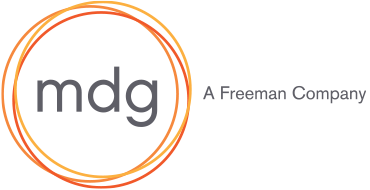Facebook has undergone many changes over the years (how did we survive without the “like” button?). Yet, whether you started a Facebook page years ago out of fear of falling behind, or you immediately saw the potential for boosting your brand, there is one constant that links us: as association or event marketers, we want to know how to measure the effectiveness of our presence on Facebook. Thankfully, the tools we need to do so are built right into the platform, and when analyzed properly, provide us with a comprehensive snapshot of our program’s success.
Facebook Insights
On the top of your branded page, you’ll see a tab for Page Insights, where you can see metrics about your page’s performance. Specifically, you can see:
Likes: Though the days of determining Facebook success solely through likes are over, there is still a lot of value in likes. Note spikes coinciding with posts, offers or other marketing activities. This is a good indication that you’re resonating with your target audience and growing your pool of potential engaged users.
Reach: Reach shows the number of unique people who have seen your page posts and can be broken down by organic, paid and viral. If your reach is consistently low, perhaps it’s time to get more focused on creating content with which people will want to engage. Which brings us to…
Engagement: This insight tells you the number of unique people who have clicked, liked, commented on or shared your posts. To get more engagement, consider asking a question that sparks nostalgia or a good feeling, using interesting images, asking for opinions, etc.
People: Here, you can see the demographics and location of your audience. Knowing whether you are reaching more men than women, or more 33-55 year olds than other age groups may help you tailor messages and further engagement.
By regularly analyzing and understanding what your Facebook metrics mean, you will be able to better tailor your Facebook program to resonate with your network. You should also see a positive shift in the role the social platform plays in connecting your event or association to your target audience.
However, you have two options to help expand your audience non-organically:
Facebook Advertising
Within a campaign, you have the ability to create ads with different copy and target audiences. Is there a market segment missing from your Facebook audience? A new segment you want to grow? Develop targeted ads designed to attract each of your target audiences and utilize the advertising tool to set up your campaign.
Facebook will automatically optimize your campaign so that more of your budget goes toward the ad that’s performing best. And, at the end of your advertising campaign, you can easily view the number of impressions and clicks your campaign generated to derive ROI through a cost-per-click conversion.
Facebook Promoted Posts
Refer to your page’s Facebook Insights and identify a recent highly engaged post to promote further. Adding a budget to these posts places it back into the newsfeed for everyone to see and engage with. You will have access to all results, including total paid engagement, engagement types and cost directly within Facebook Insights.
NOTE: It’s important to select your promoted posts carefully and watch the results closely to determine the type of post that generates the most engagement — for example, posts with valuable industry content or special Facebook-only offers might perform better than an obviously sales-driven post.
By utilizing organic, content-driven and paid promotions while tracking your Facebook metrics, you will recognize the role the medium is playing in connecting your event or association to your target audience.


